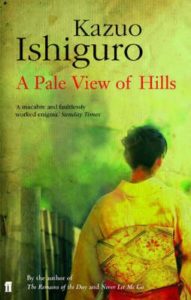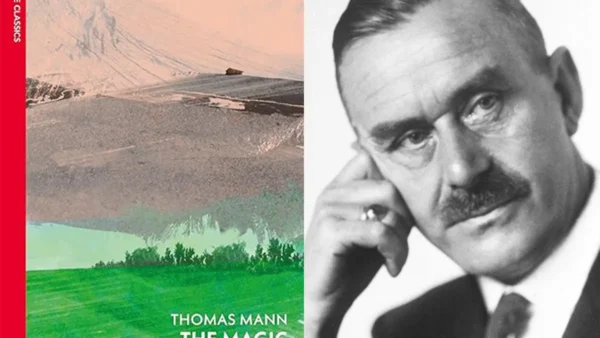Most of this novel is memory: a woman thinking about her daughter’s suicide and remembering an earlier summer in post-War Nagasaki. Almost nothing happens in the present day. The whole story of A Pale View of Hills takes place in the past.
And the story in the past is full of holes. At first this annoyed me but, the more I thought about it, the more I realised how true this is to the story as the woman would have thought about it. Not only are our memories full of holes, but there are also plenty of things we simply don’t want to think about, either because they are too painful (the suicide) or simply because they are obvious to us as we know them already.
This is why a lot of things a reader would want to know, for example how the woman ended up leaving her first husband and going from Japan to England, are left virtually untouched. We might want to know, but it’s not where this woman’s mind is going. She’s interested in a seemingly unimportant episode, a fairly brief friendship a long time ago with a woman called Sachiko and her small daughter Mariko.
Gradually we realise that the woman is thinking about them as a way of drawing parallels with her own life and understanding her relationship with her daughter. Sachiko just wants to escape from Nagasaki, where the Bomb dropped, where so many died and the survivors are living in tough conditions, and she’ll do anything to get out, even though she knows she is being a bad mother to Mariko.
The guilt comes across gradually, indirectly, but this is all we can expect from an emotionally repressed character, one who states at the outset:
“I have no great wish to dwell on Keiko [her daughter] now, it brings me little comfort.”
The writing style in A Pale View of Hills is beautiful, restrained, and Ishiguro is particularly good at making things clear without making them obvious, for example a character is saying they are happy, they couldn’t be happier, and yet although there are no overt sings of it, we know they are lying. There are also ideas here that will be developed at greater length in his later novels, such as the old man who is rejected by the younger generation, which became the theme of An Artist of the Floating World.
I’ve read all but one of Ishiguro’s novels now and enjoyed all of them. His writing is a little bit similar in all of them, though—even though they are first-person narrators in wildly different settings, they all sound like the same person somehow. But the stories are compelling enough, and the writing beautiful enough, for this not to matter really.
Interested in Ishiguro? Read my reviews of The Unconsoled and An Artist of the Floating World.




There is 1 comment
During an interview for Faber & Faber on Never Let Me Go, he states that he focuses on certain eternal issues, on what becomes important to a human being as times goes on. I find this to a constant theme in his work. It is this that binds it all together and I guess in a way, the similarity is quite deliberate.